Tattoos have been a part of human culture for thousands of years, serving as rites of passage, symbols of status, or simply as personal expressions. Yet, despite their ubiquity, there’s a world of fascinating facts and stories behind these inked designs that many people are unaware of. From the oldest known tattoo found on a 5,300-year-old mummy to the evolving social perceptions and technological advancements in the tattoo world, this article delves into ten captivating facts about tattoos. Whether you’re a tattoo enthusiast, considering getting your first ink, or simply curious about this ancient art form, read on to discover the intriguing aspects of tattoos that go more than skin deep.
- Fact 1: The Oldest Known Tattoo on the “Iceman” Mummy
- Fact 2: Cultural Significance
- Fact 3: The Science of Ink
- Fact 4: Tattoo Taboos
- Fact 5: The Most Tattooed Person
- Fact 6: Tattoo Removal
- Fact 7: Celebrity Influence
- Fact 8: The Psychology of Tattoos
- Fact 9: Tattoos in the Workplace
- Fact 10: Future of Tattoos
Fact 1: The Oldest Known Tattoo on the “Iceman” Mummy
The fascinating tale of the oldest known tattoo takes us back to the Copper Age, around 5,300 years ago, with the discovery of a mummy known as the “Iceman” or Ötzi. Found in 1991 in the Alps between Austria and Italy, Ötzi captivated researchers not just for his well-preserved state but also for the 61 simple tattoos etched into his skin. These tattoos, made from soot, are primarily located on areas of the body prone to wear and tear, such as the ankles, wrists, and lower back. This has led to speculation that the tattoos may have served a medicinal or therapeutic purpose, possibly as an ancient form of acupuncture.
The tattoos on Ötzi offer invaluable insights into the cultural and social practices of early human civilization. While their exact significance remains a subject of scholarly debate, they undoubtedly had a specific role in Ötzi’s community, whether for medicinal, ritualistic, or symbolic reasons. As we continue to appreciate the art of tattooing in modern times, Ötzi serves as a humbling reminder that the practice has ancient roots, challenging our contemporary perceptions and linking us to a shared human history that we are still striving to understand.
Fact 2: Cultural Significance
Tattoos have long been a form of expression, but their significance can vary dramatically depending on the cultural context. In Polynesian societies, for example, tattoos are deeply rooted in the fabric of the community. They are not just decorative art but a rite of passage that signifies an individual’s social status, genealogy, and maturity. The intricate patterns tell a story that is unique to the individual, making each tattoo a deeply personal emblem.
In contrast, in traditional Japanese culture, tattoos have often been associated with the Yakuza, the Japanese mafia, leading to a societal stigma around the art form. However, this perception is slowly changing, and the rich history of Japanese tattoo artistry, known as “Irezumi,” is gaining global recognition for its intricate detail and storytelling elements. From the Maori tribes of New Zealand to the indigenous cultures of North America, tattoos serve as a complex language of symbols, each with its own set of rules and meanings. As the art form continues to evolve, it remains a compelling lens through which to explore the diverse tapestry of human culture.
Fact 3: The Science of Ink
When tattoo ink is injected into the skin, it doesn’t just sit on the surface; it goes through a fascinating biological process. The ink particles are deposited into the dermis, the second layer of skin, where they are engulfed by a type of skin cell called a macrophage. Macrophages are part of the body’s immune system and their primary role is to ingest foreign particles. In the case of a tattoo, these cells consume the ink but are unable to break it down or remove it, essentially “trapping” the ink and allowing the design to remain visible through the skin.
Over time, some of the ink particles may migrate deeper into the dermis or even to the lymph nodes due to the body’s natural metabolic processes. This is one reason why tattoos can fade or blur over the years. Advances in ink technology and tattooing techniques have made it possible to create more vibrant and long-lasting designs, but the basic science of how ink interacts with the body remains a captivating aspect of this ancient art form. Understanding the science behind tattoos not only demystifies the process but also adds another layer of appreciation for the skill and expertise required to create enduring body art.
Fact 4: Tattoo Taboos
Tattoos have long been a subject of fascination, but they’ve also been met with varying degrees of acceptance depending on the culture and era. In some societies, tattoos are considered taboo and are often associated with rebellion, criminal activity, or social deviance. For instance, in Japan, tattoos have historically been linked to the Yakuza, the Japanese mafia, leading to a societal stigma. This has resulted in some public bathhouses and gyms in Japan prohibiting entry to individuals with visible tattoos.
In Western cultures, tattoos were once considered the mark of sailors, bikers, or individuals living on the fringes of society. However, this perception has changed dramatically over the years, and tattoos have gained mainstream acceptance. Despite this, myths and misconceptions still exist. Some people believe that tattoos are “job stoppers,” hindering professional advancement, although this is increasingly less the case. Another common myth is that tattoos are unsafe and can lead to infections or diseases, even though strict hygiene standards in reputable tattoo parlors have largely debunked this notion. Understanding the taboos and myths surrounding tattoos can offer a lens into the values and beliefs of different cultures, and it serves as a reminder of the complex history and diverse interpretations of this ancient form of self-expression.
Fact 5: The Most Tattooed Person
 The title of the world’s most tattooed person is a fascinating subject that captures the imagination of tattoo enthusiasts and curious minds alike. The Guinness World Record for the most tattooed person is held by Lucky Diamond Rich from New Zealand. Born Gregory Paul McLaren, Lucky Diamond Rich has spent over 1,000 hours in the tattoo chair. What sets him apart is that he is tattooed from head to toe, including the insides of his eyelids, mouth, and even his ears. His journey into the world of tattoos began with a simple, small tattoo, but it quickly escalated into a full-body project that included multiple layers of tattoos on top of each other.
The title of the world’s most tattooed person is a fascinating subject that captures the imagination of tattoo enthusiasts and curious minds alike. The Guinness World Record for the most tattooed person is held by Lucky Diamond Rich from New Zealand. Born Gregory Paul McLaren, Lucky Diamond Rich has spent over 1,000 hours in the tattoo chair. What sets him apart is that he is tattooed from head to toe, including the insides of his eyelids, mouth, and even his ears. His journey into the world of tattoos began with a simple, small tattoo, but it quickly escalated into a full-body project that included multiple layers of tattoos on top of each other.
Rich’s tattoos are not just a collection of random images; they are a tapestry that tells the story of his life, interests, and the art form he so passionately embraces. His tattoos include various styles and themes, from geometric patterns to religious symbols and everything in between. In interviews, he has expressed that for him, getting tattooed is a deeply spiritual experience that has allowed him to reclaim and transform his body into a living, breathing work of art. His commitment to body art is not just skin deep; it’s a testament to the lengths some will go to express their individuality and devotion to the art of tattooing.
Fact 6: Tattoo Removal
The topic of tattoo removal is as intriguing as the art of tattooing itself, especially given the advancements in technology that have made it increasingly effective and less painful. For many years, the options for tattoo removal were limited and often involved invasive procedures like dermabrasion, salabrasion, or even surgical excision, which could lead to scarring and infection. However, the landscape of tattoo removal has been revolutionized with the advent of laser technology.
Laser tattoo removal has become the gold standard for erasing unwanted ink. The process involves the use of high-intensity light beams to break down the pigment particles in the tattoo. Different wavelengths of light are used to target specific colors, making it possible to remove even the most vibrant and deeply embedded tattoos. The most advanced lasers, like the Q-switched lasers and picosecond lasers, can remove a tattoo with fewer sessions and less residual scarring compared to older methods. These lasers work by emitting extremely short pulses of light that shatter the ink particles into tiny fragments, which are then naturally eliminated by the body’s immune system.
It’s worth noting that while laser tattoo removal is effective, it’s not a one-and-done procedure. Multiple sessions are usually required, and factors like the age, color, and location of the tattoo, as well as the individual’s skin type, can all affect the ease and success of removal. Nonetheless, the advancements in laser technology have made it possible for many people to say goodbye to their regrettable tattoos with minimal side effects, making it a fascinating aspect of the ever-evolving world of tattoo artistry.
Fact 7: Celebrity Influence
The influence of celebrities on tattoo culture is undeniable and has played a significant role in shaping tattoo trends and public perception over the years. Celebrities often serve as trendsetters, and their choices in tattoo art are no exception. For instance, Rihanna, known for her bold fashion choices and equally daring tattoos, has been a significant influence in popularizing various tattoo styles. Her collection of tattoos, ranging from tribal designs to script and symbols, has inspired fans and tattoo enthusiasts alike to explore more eclectic and personal designs.
Angelina Jolie, another iconic figure in both Hollywood and the tattoo world, has also made a lasting impact. Her tattoos, each with a unique story or cultural significance, have sparked interest in tattoos that carry deeper meanings. Jolie’s well-known geographical coordinates tattoo, representing the birthplaces of her children, has been widely imitated and has encouraged people to think of tattoos as markers of significant life events or milestones.
Both Rihanna and Angelina Jolie have not only showcased their tattoos proudly but have also talked openly about the personal and cultural significance behind them. This openness has helped to destigmatize tattoos in mainstream culture and has encouraged a more thoughtful approach to getting inked. Their influence extends beyond mere aesthetics; they have made tattoos a part of the broader conversation about self-expression, identity, and even social and cultural awareness. As a result, many people now view tattoos as not just body art, but as a form of personal storytelling, thanks in part to the celebrities who have used their platforms to redefine what tattoos can represent.
Fact 8: The Psychology of Tattoos
Fact 9: Tattoos in the Workplace
The perception of tattoos in the workplace has undergone a significant transformation over the years. In the past, tattoos were often associated with rebellion, non-conformity, or even deviance, leading to a general stigma against them in professional settings. Many companies had strict dress codes that required tattoos to be covered up, and having visible tattoos could be a barrier to employment in certain industries. However, as tattoos have become more mainstream and socially accepted, these attitudes are gradually changing.
Today, the corporate world is becoming increasingly tolerant of tattoos, reflecting broader societal shifts in attitudes towards body art. A growing number of companies are adopting more relaxed dress codes, allowing employees to display their tattoos openly. This change is particularly evident in creative industries like advertising, design, and media, where self-expression is often encouraged. However, even in more conservative fields like finance and law, the stigma surrounding tattoos is diminishing. Several studies have shown that having a tattoo no longer significantly impacts one’s employability or career advancement prospects as it once did.
That said, the acceptance of tattoos in the workplace can still vary widely depending on the industry, the specific company, and even the country or region. While some employers view tattoos as an expression of individuality and creativity, others may still have reservations, especially for positions that involve frequent interaction with clients or the public. Therefore, it’s always a good idea to research a company’s culture and policies if you’re job-hunting and have visible tattoos.
In summary, the perception of tattoos in the workplace is evolving, becoming more accepting and open. However, it’s essential to be aware that not all industries or companies have embraced this change to the same extent.
Fact 10: Future of Tattoos
The tattoo industry is not one to be left behind in the technological revolution. As we look to the future, tattoos are becoming more than just ink on skin; they are evolving into functional, smart body art. One of the most exciting developments is the concept of bio-ink, a type of ink made from living cells. This bio-ink can be used to create tattoos that change color based on certain biological or environmental factors. For example, imagine a tattoo that changes color when you’re dehydrated or when your blood sugar levels change. This could be a life-saving advancement, especially for people with specific medical conditions.
Another groundbreaking trend is the emergence of smart tattoos. These are tattoos embedded with technology that can perform various functions, from storing your medical records to acting as a touchpad to control your smartphone. Researchers are even exploring tattoos that can monitor your health metrics and send them directly to your doctor.
Adding to this innovation is the role of Artificial Intelligence (AI) in tattoo design. AI algorithms can now generate unique tattoo designs based on individual preferences, styles, and even cultural significance. This technology allows for a more personalized tattoo experience, offering designs that are tailored to each person’s unique identity and taste.
While these technologies are still in the experimental phase, they hold the promise of transforming tattoos from mere body art into functional, interactive interfaces. The future of tattoos is undoubtedly exciting, blending art, science, and technology into an ever-evolving form of self-expression. These advancements not only push the boundaries of what tattoos can be but also challenge our perceptions, making us rethink the possibilities of body art in the 21st century.
—
Sources
- Scientific American
- Wikipedia
- Guinness Book of World Records
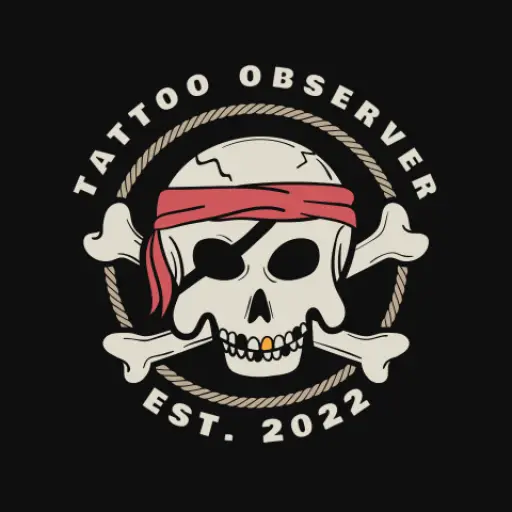










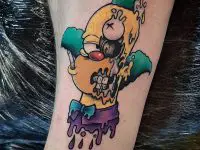
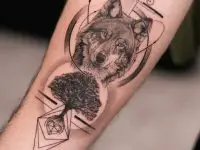
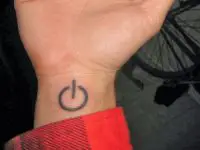


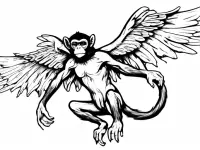
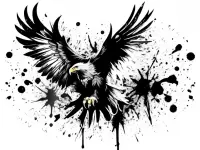
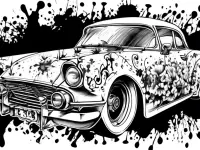



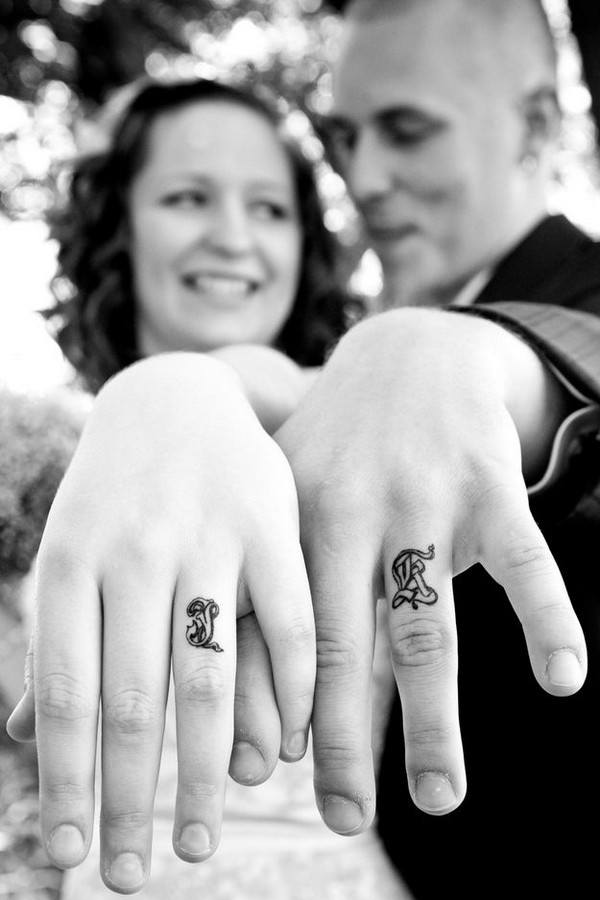
0 Comments